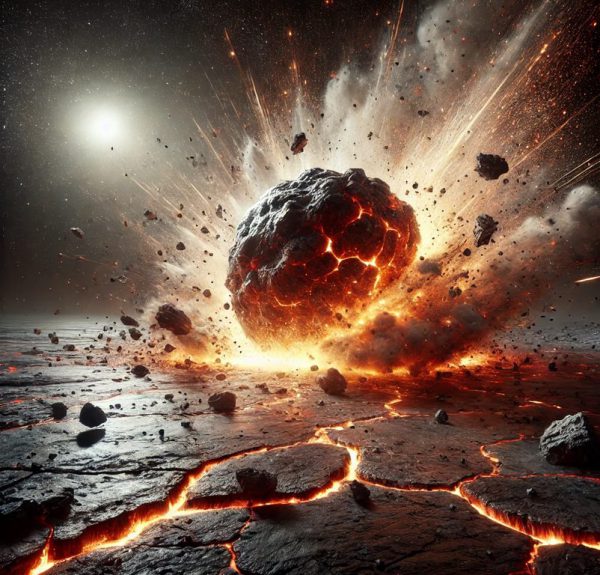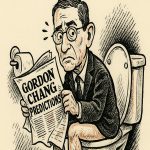
Market Crashes: Panic for Some, Profit for the Prepared
March 01, 2025
Introduction:
What happens when the foundation of financial markets trembles, the pillars of stability collapse, and chaos reigns supreme? A stock market crash is more than an economic event—it is a psychological reckoning, a test of resilience, and a moment of profound opportunity. To the unprepared, it feels like a cataclysm. To the disciplined, fortunes are built on the reset button. The question is not whether crashes will happen—they are inevitable—but how you will respond when they do.
A stock market crash exposes the raw emotions that underpin human behavior in the financial world. Fear replaces reason, greed gives way to panic, and the herd mentality drives irrational decision-making. Yet amid the wreckage lies unparalleled opportunity. This essay explores the anatomy of a crash, the forces that drive it, and the strategies you can employ to harness its chaos for long-term gains. Let us venture into the heart of market turmoil and emerge with clarity, confidence, and a contrarian edge.
The Anatomy of a Market Crash
A stock market crash is a sudden, sharp price decline triggered by a cascade of fear and uncertainty. Crashes often arise from various factors: economic instability, geopolitical shocks, excessive speculation, or a rapid shift in investor sentiment. Yet, these factors are merely the catalysts. The true driver of a crash is the collective psychology of market participants.
Humans are hardwired for loss aversion, a cognitive bias that causes us to fear losses more intensely than we value equivalent gains. When prices begin to fall, this fear spreads like wildfire, compelling investors to sell in droves. The herd mentality amplifies the panic, creating a self-fulfilling selling cycle and further price declines. Media sensationalism and algorithmic trading exacerbate the speed and scale of the collapse, leaving little room for reasoned decision-making.
Historical examples illustrate this dynamic vividly. The 1929 crash marked the beginning of the Great Depression, as overleveraged investors liquidated positions en masse. The financial crisis of 2008 was driven by the collapse of subprime mortgages, triggering a global panic. More recently, the 2020 pandemic-induced crash saw markets plummet as uncertainty gripped the world. In each case, fear dictated behaviour, but for those who understood the nature of crashes, these moments also presented extraordinary opportunities.
Opportunities Amid Chaos: The Contrarian Mindset
As Sir John Templeton famously said, “The time of maximum pessimism is the best time to buy.” This contrarian philosophy is the key to turning a market crash into a wealth-building opportunity. When others are selling out of fear, the disciplined investor sees value. Crashes create mispricings—stocks of fundamentally sound companies are dragged down alongside weaker ones, offering rare bargains in normal market conditions.
One of the most effective ways to capitalise on a crash is through dollar-cost averaging. By consistently investing a fixed amount at regular intervals, you reduce the impact of short-term volatility and acquire more shares when prices are low. This strategy mitigates the emotional temptation to time the market and benefits you from the eventual recovery.
Another powerful contrarian strategy is selling options on high-quality stocks during periods of heightened volatility. When fear dominates, put premiums rise, allowing you to generate income while potentially acquiring shares at a discount. The key is to focus on companies with strong fundamentals and a track record of resilience. By selling puts strategically, you align yourself with Templeton’s philosophy of buying when others are selling.
Your ability to adopt a contrarian mindset hinges on preparation and discipline. Crashes are not the time to improvise—they are the time to execute a well-thought-out plan. This means identifying target assets in advance, maintaining liquidity to act swiftly, and cultivating the emotional fortitude to remain calm when others are panicking.
The Role of Risk Management
While market crashes present opportunities, they also pose significant risks. Even the most promising strategies can lead to devastating losses without proper risk management. This is why discipline and a clear framework are essential for navigating market turmoil.
One of the cornerstones of risk management is diversification. By spreading your investments across asset classes, sectors, and geographies, you reduce your exposure to the specific factors that trigger a crash. For example, during the 2008 financial crisis, portfolios that included bonds and defensive sectors fared better than those concentrated in equities.
Stop-loss orders and position sizing are also critical tools for limiting downside risk. A stop-loss order automatically sells a security when its price falls to a predetermined level, preventing further losses. Position sizing ensures that no single investment accounts for an outsized portion of your portfolio, reducing the impact of a steep decline in any one asset.
Finally, maintaining a long-term perspective is perhaps the most effective form of risk management. Crashes are temporary, but recovery is inevitable for those who stay the course. By focusing on your long-term goals and resisting the urge to react impulsively, you can weather the storm and emerge stronger on the other side.
Seizing the Recovery
What happens after a stock market crash? History proves that recovery is not just possible—it is inevitable. Markets are built on resilience, fueled by innovation, and driven by the relentless pursuit of progress. The question is not whether the market will rebound but whether you will be positioned to capitalize on it.
One key strategy is identifying sectors poised for post-crash growth. After the 2008 financial crisis, technology and renewable energy surged. The 2020 pandemic crash accelerated e-commerce and healthcare. Understanding macroeconomic trends and consumer shifts lets you anticipate where capital will flow next.
ETFs (Exchange-Traded Funds) provide a straightforward way to ride the market’s recovery, offering broad exposure to rebounding sectors while minimizing individual stock risk. Meanwhile, the bold options strategies—such as long-term call options on undervalued assets—offer high-reward potential, though they demand precise risk management.
Mastering the Crash
What happens when the stock market crashes? Panic spreads. Fear tightens its grip. Weak hands fold. Fortunes are either destroyed—or created. A crash is not an ending. It is a reckoning. It separates the prepared from the unprepared, the strategic from the emotional, the bold from the timid.
History does not remember those who capitulate at the bottom; it remembers those who seize the moment. In 1929, the panic sellers vanished into obscurity, while those who bought when blood ran in the streets laid the foundations for generational wealth. After the 2008 financial crisis, those who acquired distressed assets reaped exponential gains. The pandemic crash of 2020? Those who understood that fear was temporary and positioned themselves accordingly rode one of the fastest recoveries in market history.
Most will fail this test. They will succumb to emotion, liquidate their portfolios at the worst possible time, and convince themselves that “this time is different.” They will watch from the paralyzed sidelines as the market recovers without them. But a select few who embrace volatility, think independently, and act decisively will seize the asymmetric opportunities hidden beneath the rubble.
A market crash is not a tragedy—it is an inevitability. It is neither good nor bad. It is a force of nature, like fire: destructive to those who do not respect it, yet indispensable to those who know how to wield it. The question is not whether crashes will happen; they are part of the cycle, as natural as the rise and fall of empires. The real question is:
Will you be a victim of fear, or will you master the chaos and emerge stronger?












